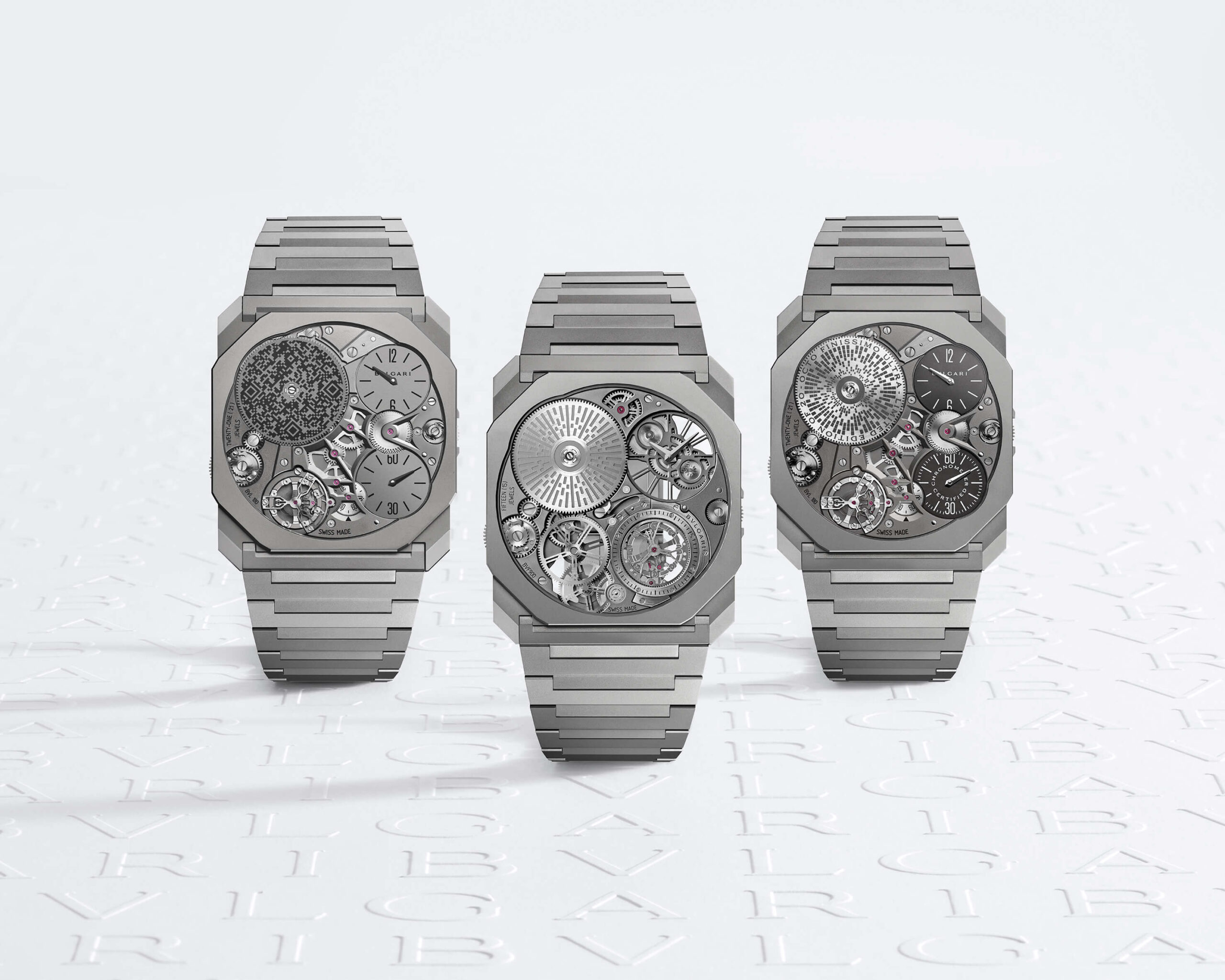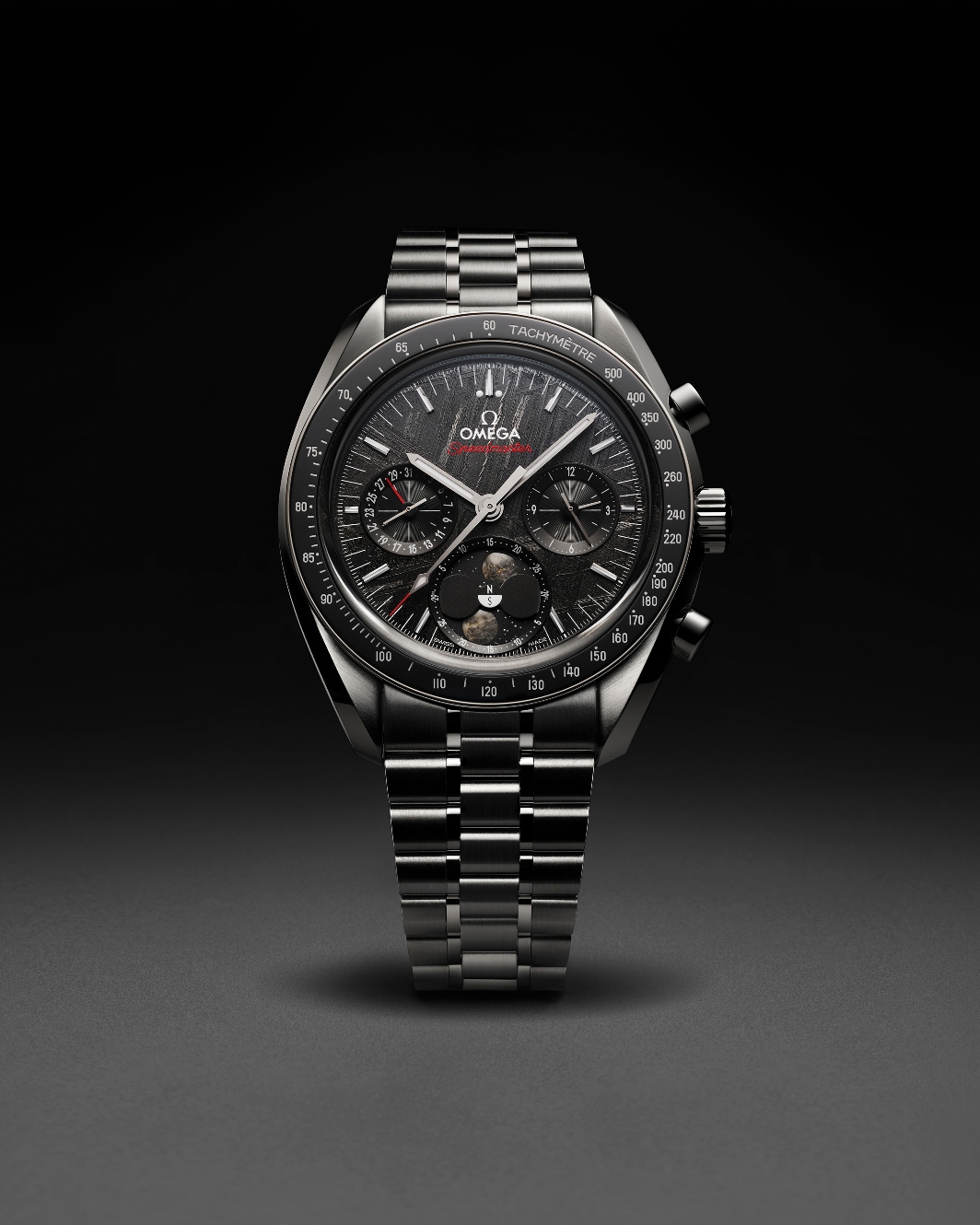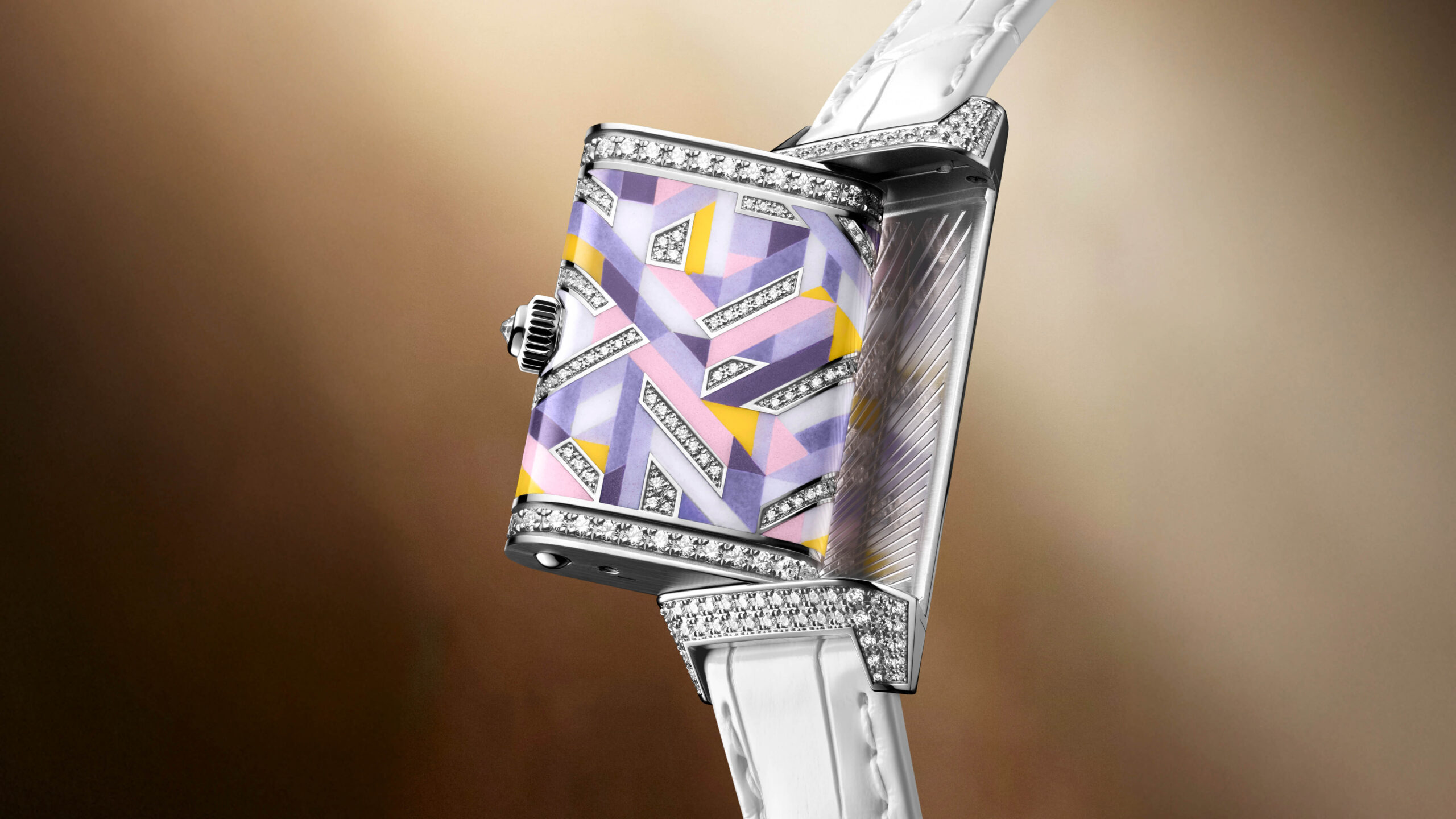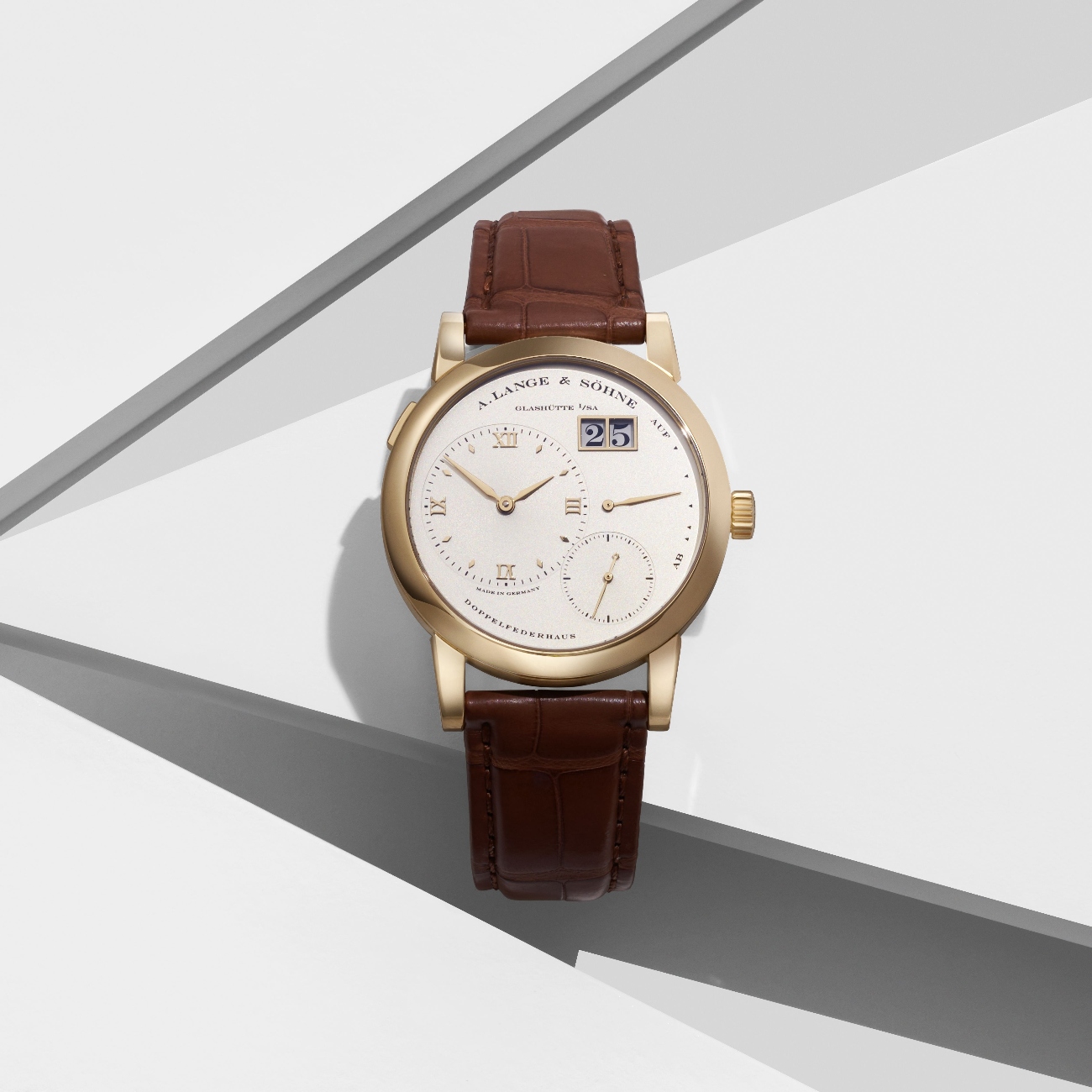[

That is because this is not simply about ‘timeless’ design, with its suggestion of inoffensiveness and innocuousness. A so-called timeless style can look like so many other watches. To be disruptive is harder: both to design and to sell. Certainly, many of those watches considered iconic broke a mould when launched: designer Gerald Genta’s Royal Oak reimagined stainless steel and an industrial aesthetic as luxury; Rene-Alfred Chauvot’s Reverso provided an engineering solution to protect the dial of his Reverso; Swatch built on quartz’s affordability in pop plastic. And so on. As Max Busser, founder of MB&F points out, so many watches now considered trail-blazing and iconic were so radical that they were commercial flops when launched.
Indeed, that brings us back to those other icon-defining factors that Giroud notes as being out of his hands. The first is time: iconic status is won only by having stuck around, and in the case of many watches, that means for decades. It is why, for Gisbert Brunner, watch enthusiast and the author of 100 Iconic Watches (published by teNeues last year), the ultimate watch icon is the Cartier Santos: the watch that pioneered the very idea of the purpose-designed wristwatch, “and, amazingly, the same in 2025 as it was in 1907,” he says.

Giroud’s second factor is consumer appreciation. These are mutually reinforcing, of course: arguably the more consumers demand a watch, or express their regard for it – something much more easily done since the advent of social media – the more a brand is likely to continue to manufacture it; and this, in turn, underpins appreciation. As Sebastien Gobert, the creative director of Zenith, puts it, “a brand can seek to be disruptive with a design, but once it has done that the process [of becoming an icon, or not] is completely controlled by the consumer. That’s why it’s such a risk to be disruptive in the first place”.
Busser, formerly of Jaeger-LeCoultre, says he remembers a long spell in the 1990s “when you couldn’t give a Reverso away. The line you would hear was ‘why would anyone want a watch you can flip over?’,” he recalls. “The model had spent several decades just vanished [from the watch scene] and it was only when a distributor asked for it to be remade that it was slowly re-discovered. It’s an indication of how there’s no way a brand can set out to make an icon—that’s down to the public, to those super early adopters”.
Is their appreciation all for the aesthetics of a watch? Brunner does not think so: he cites engineering innovation—the slimmest, lightest, most precise in mechanical watches – as worthy of icon status too, which is why he counts in the likes of Grand Seiko’s Spring Drive, “even though it looks like thousands of other watches out there”.
Then there is the broader cultural resonance of a watch— that it reflects a moment in history, like the famed Dirty Dozen of military watch fame, suggests Giovanni Moro, founder of Unimatic; or because it made an appearance in a film. TAG Heuer’s Monaco might have become an icon without the assistance of being worn by Steve McQueen in Le Mans, as might have the Porsche Design Chronograph One, the world’s first fully black watch, without it being worn by Tom Cruise in Top Gun – but it certainly helped. But how about the Casio CA-50 ‘calculator watch’, as worn in Back to the Future?
“There are only a handful of true icons in the watch world and I think some might have been helped on their way by resonating with the zeitgeist, in the way that the Rolex Submariner probably got a boost through its association with James Bond, or the Speedmaster did from the moon landings,” argues Angus MacFadyen, owner of the Alsta brand, whose Superautomatic was worn in Jaws, which marks its 50th anniversary this year. “This is mostly beyond the watch company’s control, of course, especially whether that film itself comes to be considered in some way iconic. But this is a balancing act for any brand: you don’t want to end up being just ‘the maker of the Jaws watch’”.
The association with film does, however, speak to the visual appeal of iconic watches—after all, ’icon’ comes from the Greek ‘eikon’, meaning ’image’. So often they have some distinctive and sometimes divisive stand-out detail – the sidewalls of the Patek Philippe Nautilus’s case, the oversized crown-guard on a Panerai Luminor, or, getting much crazier, the shape of the Cartier Crash, for example. “A shape you can identify from 25m is, I think, a key aspect of what makes a watch iconic,” reckons watch influencer Kristian Haagen. “Frankly I wouldn’t really care if my Nautilus had a Quartz movement. It’s the look I love”. Carlos Rosillo, the CEO of Bell & Ross, argues that it is this overwhelmingly visual identity that is at the heart of what makes an iconic watch, and which encourages consumers to regard it as such.
“An icon has to be aesthetically very original, different, all while respecting the values of the brand. You might be able to just look at the shape of the watch alone and know what it is, without the need for any branding at all,” he says, suggesting this to be true of Bell & Ross’s square BR-01, and seeking to prove the case in its recent, brand-free iteration, the BR-03 Astro. “The trick is in making a statement and then protecting it, having options to develop it that keeps [your audience] surprised.”

Certainly, as Giovanni Moro argues, not every watch now given “the ‘icon’ seal of approval” deserves to have it. “You see more and more watch companies trying to make an icon through marketing alone,” he laments, “while it can feel that other truly great watch designs—like the Speedmaster, which is definitely an icon—sometimes get over-written by the sheer weight of the marketing that keeps them iconic. It’s all ‘the moon, the moon, the moon!’” “But of course every watch brand wants to have an icon in their collection, or at least claim that it has an icon,” says Brunner. “When I was writing that book lots of brands contacted me to say ‘we have an icon too!’ but often what they had was more of a me-too watch.”
This is understandable from a business perspective: an icon is a reliable seller, year in, year out, with that iconic status ensuring a public profile and plenty of free promotion. It provides a financial bedrock on which sometimes other, more contemporary designs
might be built – having an iconic model that was once considered disruptive, if no more, provides some freedom to be disruptive with contemporary designs, and thus perhaps create the icons of tomorrow, says Gobert.
More than that “there is something stabilising about having an icon,” Rosillo suggests. “If you feed it well it generates a lot of power and gives the market confidence in the brand. It can give an entire brand the meaning it needs to have”. It also provides a launch-pad into a wider brand world for any would-be customer. For those who do get hooked, icons often are, as it were, the gateway drugs to a wider watch appreciation.

But that’s not to say a brand having an icon is all good. “It’s a double-edged sword,” reckons Busser. “I’d hate MB&F to have an icon because we’re all about creating something very different every time. But of course I recognise that it would be great for business”. Icons can also become brands of a sort in their own right – people don’t necessarily want a Rolex, for example, but a Daytona – overwhelming the actual brand on the dial, “and capturing all the attention,” notes Rosillo. ”It’s dangerous to become known for just that one product”. Keeping the icon fresh – recognisably itself, yet not entirely stuck in aspic either – is also no easy task. “From the design point of view an icon is a nightmare to work with,” laughs Gobert, “because you have to somehow continue its story while also working to so many limitations”.
“Every year those brands have to put a lot of effort into keeping those icons going in an interesting way,” adds Giroud, who suggests that for a brand to have one can also have the effect of dampening down a wider creativity. This is especially true of those bigger brands for which any new watch represents a huge investment. “By the same token, so much of the watch industry is all about history and legacy now, so if they have an iconic watch most companies dare not do too much with it. Kill the icon and you kill the business.”
That is all the more tricky when, well, us consumers just love those icons. From a consumer perspective, an icon is certainly, as Giroud puts it, “the easy choice, even if the industry is so much bigger now and there’s the option to make a much more personal choice. But if you’re going to spend a lot of money on a single watch, it is understandably tempting to buy what’s perceived as being a ‘classic’.” Indeed, perception is a key factor here: icons have cultural resonance beyond what might otherwise be considered a rather niche interest. Since most people are not watch nerds, the power of an icon to signal taste and status to other people – who may know nothing about watches—matters.
“That’s true of design more broadly,” argues Robert- Jan Broer, the founder of Fratello Watches. “A product that’s considered iconic represents a good [maybe the best] version of that product type. If you’re buying a watch, or a chair, a camera or a car, it’s widely accepted as having set and met some kind of standard”.
In cars think of the likes of the Ford Mustang, VW Beetle or Mini – though Broer points out that many cars continue to exist through time more as the idea of a design than the design itself. In homewares, think of the likes of the Eames lounge chair, or the Anglepoise 1227 lamp. Even coffee pots have their iconic version, in the Bialetti Moka. Like these other design icons, watches have their icon status reinforced by being endlessly copied – not to mention counterfeited outright, argues Haagen. “It’s in
part what allows the design to be accepted and respected across generations, that places it beyond just fashion,” he says.
Or, as Swatch Design Committee member Carlo Giordanetti pithily puts it: “a watch becomes an icon through repetition”. While Swatch’s high output of new models may have given it a higher icon return rate than most brands – the Gent, the Jelly, the Scuba among them – all this has come to its logical postmodern conclusion in the Moonswatch. It is a riff on a icon that looks like it might itself become an icon in time.
“The Moonswatch is like the square of an icon,” Giodanetti laughs. “The project is still young but in terms of the discussions it has started it’s been huge, and in the way it has turned things around in terms of what’s thought possible in the world of watches. We use the word ‘icon’ too much – to the point that it’s become non-descriptive. But this is certainly disruptive”.
‘Modern icon’ too makes for some lazy marketing, a seeming contradiction in terms. But perhaps, with the watch industry’s huge expansion over more recent decades, there are more icons in the making, yet to be tested over time, and – thanks to an increase in the pace of production, and the pace with which social media generates buzz – with that process in acceleration. For Busser, Richard Mille’s first watch, the RM001, potentially deserves the ‘icon’ appellation, even though it was launched only 24 years ago. For Broer, it is A. Lange & Söhne’s Lange 1—launched 31 years ago—or the Bulgari Octo Finissimo – launched 11 years ago – that are ones to watch. For Moro, it is the 13-year-old Ressence Type One.
“But I do believe we have to think about the idea of watch icons more broadly now, while carefully considering what it really means,” says Brunner, who, while limiting his book’s selection to 100 pieces, reckons he could easily have selected 200. “Naturally a lot of what makes a watch ‘iconic’ to people is just their personal opinion. It is like calling a watch ‘beautiful’. But we so often now use the word ‘iconic’ without reflection. That designation needs to be well-deserved”.
This story was first seen in WOW #78 Vision 2025 Issue
For more on the latest in luxury watch reads, clickhere.

